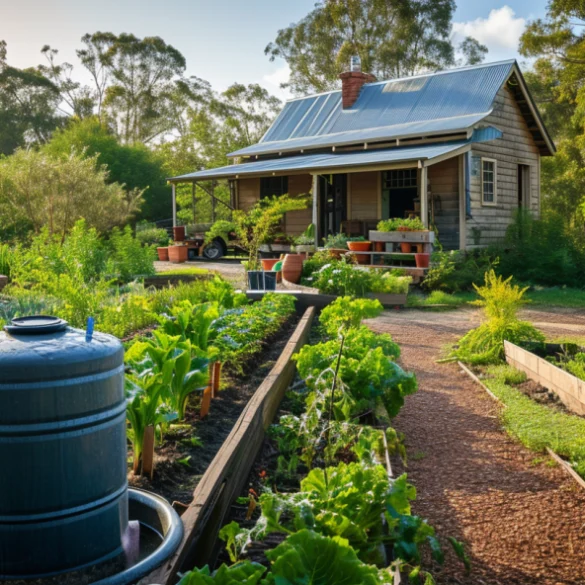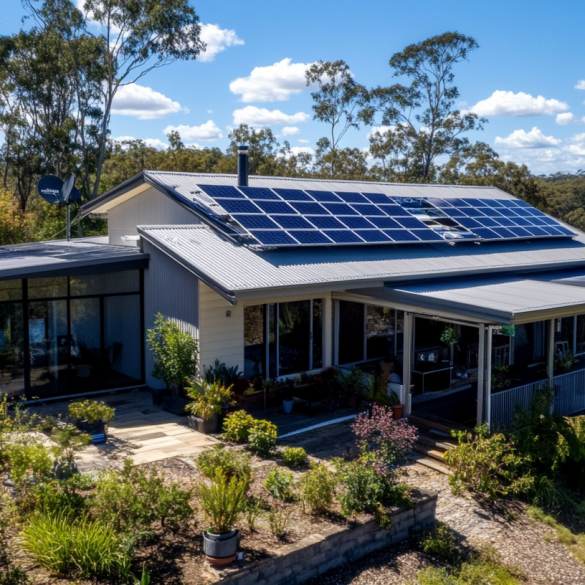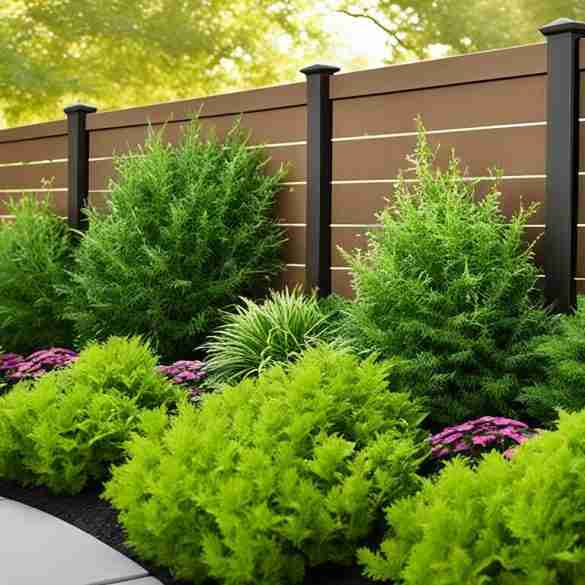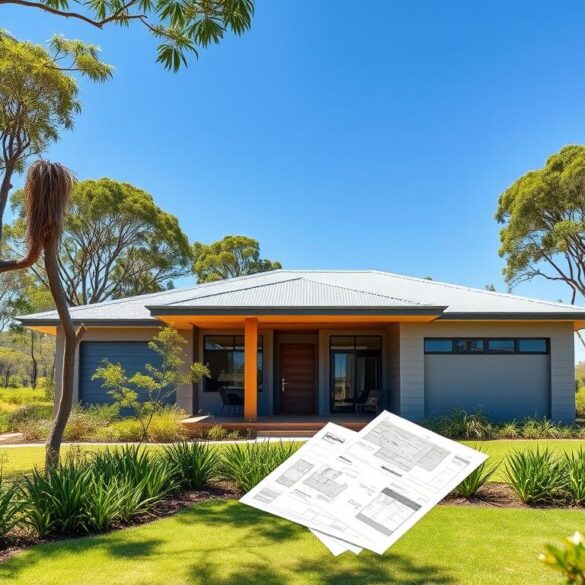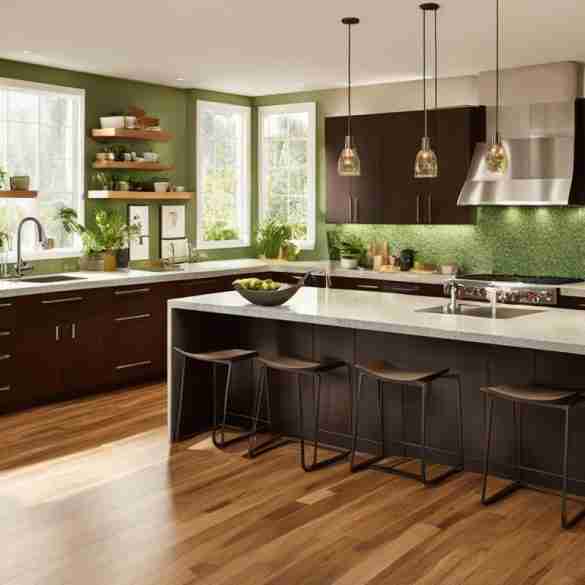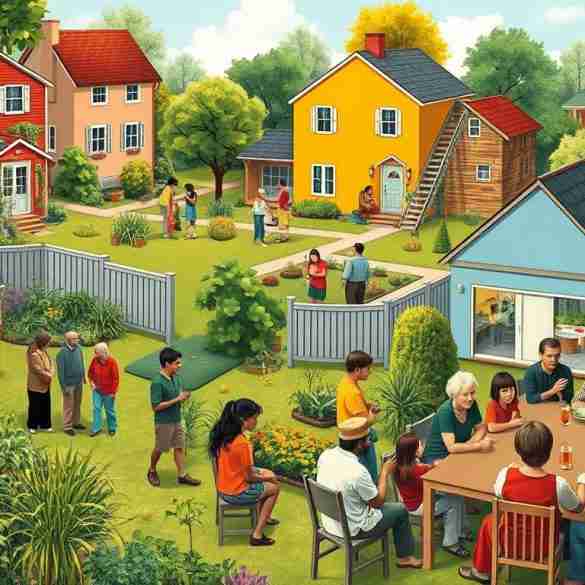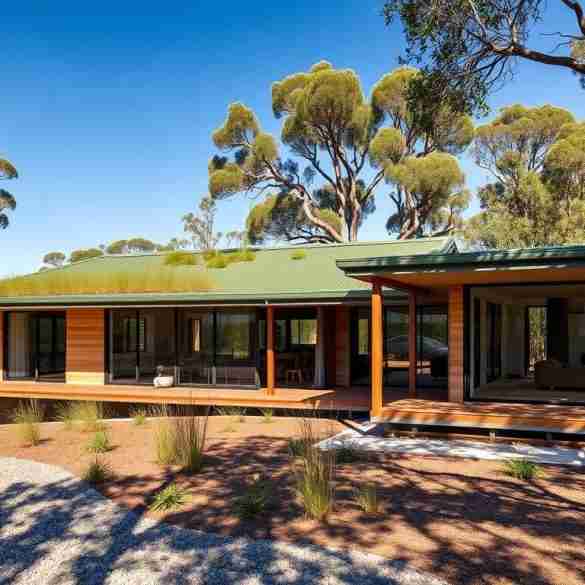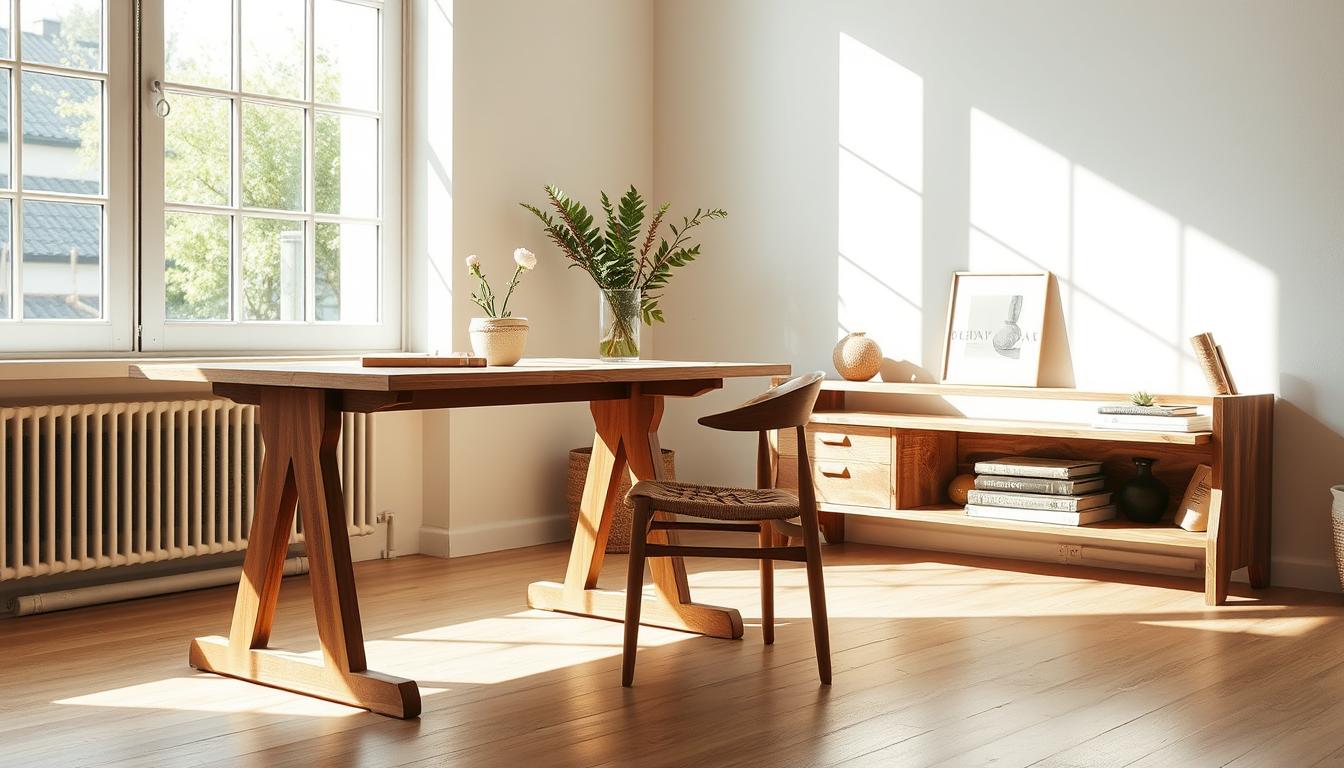In Queensland’s Outback, finding affordable homes is hard. But kit homes are becoming a popular choice. iBuild Kit Homes QLD offers designs that use green energy, perfect for remote living.
The Queensland government wants to help with green homes. They offer rebates and schemes for kit homes. Insurance companies also give discounts for homes that are good for the planet.
iBuild Kit Homes QLD helps from start to finish. They guide you through design, approvals, and building. This makes kit homes a great choice for a new home in Queensland’s remote areas.
Key Takeaways for Cost-Effective Kit Homes for Queensland Remote Areas
- Kit homes offer cost-effective housing solutions for remote areas in Queensland
- iBuild Kit Homes QLD provides flexible, sustainable designs that integrate alternative energy sources
- The Queensland government offers rebates and schemes to encourage the adoption of environmentally friendly kit homes
- Insurance companies in Queensland may provide discounts for homes with sustainable features, reducing overall costs
- iBuild Kit Homes QLD offers comprehensive support, from design to assembly, ensuring a hassle-free experience for homeowners
Table of Contents
Podcast about kit homes in remote areas an overview of this article
What Are Kit Homes and Their Benefits?
Kit homes are a great choice for those looking for affordable and easy-to-move homes. They are perfect for remote areas in Queensland. These homes come pre-made and are easy to set up.
Understanding Kit Homes
Kit homes are built elsewhere and then moved to where you want them. They are simple to put together, needing little special labor. In Australia, kit homes have been around since the 1850s. You can still see some of the old ones in South Melbourne today.
Advantages of Kit Homes
- Cost-effective: A basic prefab home, like a kit home, costs between $2,500 to $3,000 per square meter. This makes them a good choice for your budget.
- Faster construction: Kit homes are built faster than regular homes. This means your project can be done quickly.
- Suitability for harsh environments: Kit homes are made to handle tough weather. They are great for Queensland’s outback.
Ideal for Remote Living
Kit homes are great for places where it’s hard to find builders. They are flexible in design and can use green technologies. This makes them perfect for living off the grid.
“Kit homes have been popular in America since the early 1920s, but their history in Australia dates back even further to the 1850s.”
Factors to Consider When Choosing Kit Homes
When picking kit homes for your rural Queensland home, think about a few key things. Size, layout, material quality, and climate are all important. Each one helps make sure your new home works well and lasts long.
Size and Layout Options
Kit homes vary in size, from small to big. Think about how much space you need and how you live. You can also pick a design that fits your style.
Material Quality
The materials used in kit homes matter a lot in Queensland’s weather. Choose materials that can handle the sun, salt, heat, and humidity. Steel is better than wood because it lasts longer and can handle bad weather.
Climate Considerations
Queensland’s weather changes a lot. Your kit home should be able to handle it. Look for homes that can stand up to strong winds, fires, and floods. Sustainable Home Magazine has tips for building green in remote areas.
| Sustainable Building MaterialsModular Home DesignsRural Queensland Housing | ||
|---|---|---|
| Steel frames with up to 25-year guarantee against insect attack | 6-Star Energy Rating for high energy efficiency | Free delivery to South East Queensland, cost-efficient arrangements for other regions |
| Kiln-dried structural treated pine for pre-nailed wall frames | Customizable designs with unique plans for each client | Construction time of 10-12 weeks for 2-4 bedroom homes |
| Bushfire and flood-resistant materials available | Owner Builder and Contract Builder options for flexibility | Free Owner Builder Course for cost-saving measures |
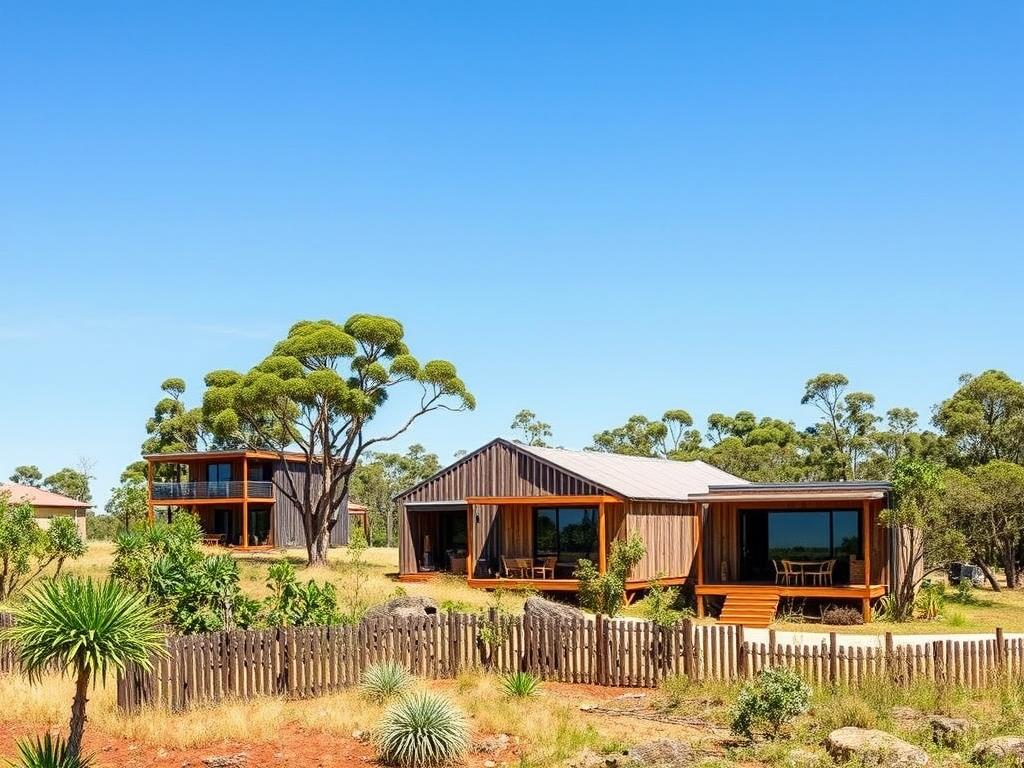
Think about these things to get a kit home in rural Queensland that looks good and works well. With the right choices, you can have a green home, that fits your needs, and looks great in Queensland’s beautiful landscapes.
Popular Kit Home Designs for Queensland
In Queensland, there are many kit home designs to pick from. You can find cozy one-bedroom homes or big two-story homes with up to five bedrooms. These homes can be made to fit many different needs and tastes.
Modern Styles
Kit homes in Queensland have sleek, modern looks. They have clean lines, big windows, and open spaces. This makes them bright and airy. You can choose simple designs or add colors and textures to make them your own.
Traditional Designs
Queensland’s rich history is seen in its traditional kit homes. These homes have pitched roofs, and decorative gables, and use natural materials like timber and stone. They are great for those who want a cozy, welcoming home that honors the region’s past.
Customizable Options
Kit homes are great because you can make them your own. In Queensland, you can pick from many fixtures, finishes, and upgrades. This lets you create a home that shows off your style and meets your needs.
Whether you like modern or classic designs, Queensland has a lot to offer. You can customize your home to fit your lifestyle. This way, you can make a modular home that’s perfect for you in Queensland.
“The flexibility of kit homes allows us to create a space that truly reflects our family’s personality and needs. We were able to customize every detail, from the kitchen fixtures to the outdoor living area, and the end result is a home that we’re proud to call our own.”
– Jane Joeling, Sustainable Home Magazine
Cost Analysis of Kit Homes in Queensland
Kit homes in Queensland are a great choice for affordable housing. They are cheaper upfront and save money in the long run. This makes them perfect for living in remote areas.
Initial Costs vs. Long-Term Savings
Kit homes cost less to start than building from scratch. This is because they are made in a factory and need less labor on site. They also use energy-saving materials, which means lower bills and less upkeep over time.
Budget-Friendly Choices
In Queensland, there are many kit homes to choose from. They fit different budgets and needs. This way, people can get a cozy, green home without spending too much.
Financing Options
Some kit home suppliers in Queensland work with finance companies. This makes it easier to buy a kit home. It helps more people get affordable housing in remote places.
| Metric | Value |
|---|---|
| Typical Construction Time for Prefabricated Homes | 12-14 weeks |
| Waste Reduction for Prefabricated Homes | 90% less than traditional building sites |
| Expected Growth of Offsite Construction Sector | 5% to 15% of the construction industry over the next few years |

Looking into kit homes in Queensland shows affordable housing solutions. They are not just cheap at first. They also offer long-term savings and flexible payment plans. This new way of building homes makes remote living more possible and sustainable for families in Queensland.
Building Regulations in Queensland
Building kit homes in Queensland needs to follow local rules. You need a complying development certificate and a planning permit. Luckily, suppliers like iBuild help with the paperwork and getting council approval.
Kit home designs must pass wind and bushfire tests. Suppliers give detailed plans for Council approval. This ensures your home meets local codes, especially in risky areas.
Permitting Process
Getting a permit for a kit home in Queensland is easier with a good supplier. They help with the certificate and planning permit from the council.
Compliance Requirements
- Temporary buildings in Queensland can stay for 2 years max unless the council says it’s okay for longer.
- They must follow the Queensland Development Code (QDC) MP 3.3 for temporary buildings unless they’re exempt.
- These buildings need to meet standards like wind safety, fire safety, and energy efficiency.
- Breaking these rules can lead to fines.
Local Building Codes
Your kit home must follow local building codes, especially in cyclone and bushfire zones. The National Construction Code (NCC) sets energy standards for walls and roofs, but not floors.
“Permanent and existing lawful temporary accommodation buildings not being moved or relocated are exempt from some provisions of the QDC.”
Following Queensland building regulations, permitting process, and compliance requirements makes building a kit home in Queensland easier.
Sourcing Kit Homes in Remote Areas
Looking for the perfect kit home in Queensland’s remote areas? You have many reliable suppliers to choose from. Wide Span Homes is a top family-owned provider of steel kit homes. They’ve been serving Australia for over 20 years.
Their kit homes come with a 20-year warranty from BlueScope Steel. They use eco-friendly materials to save energy and cut down on carbon emissions.
Homebuyers can also check out online resources for kit home designs and quotes. These websites let you compare options easily without visiting showrooms. Or, you can go to local workshops and exhibitions to see kit homes in person and talk to suppliers.
Top Kit Home Suppliers in Queensland
- iBuild – iBuild has bases in Brisbane and Townsville. They deliver to remote areas in Queensland. Delivery costs vary from $750 to $10,500, based on location and zone.
- Prestige Kit Homes – Prestige Kit Homes offers a wide range of kit home designs. They are well-known in the Queensland market.
Online Resources
Sustainable Home Magazine is a great online resource for kit home information. It lets users browse designs, get quotes, and find local suppliers.
Local Workshops and Exhibitions
Local workshops and home shows are great for seeing kit homes in person. These events showcase different suppliers’ designs, materials, and features. It’s a chance to compare them up close.
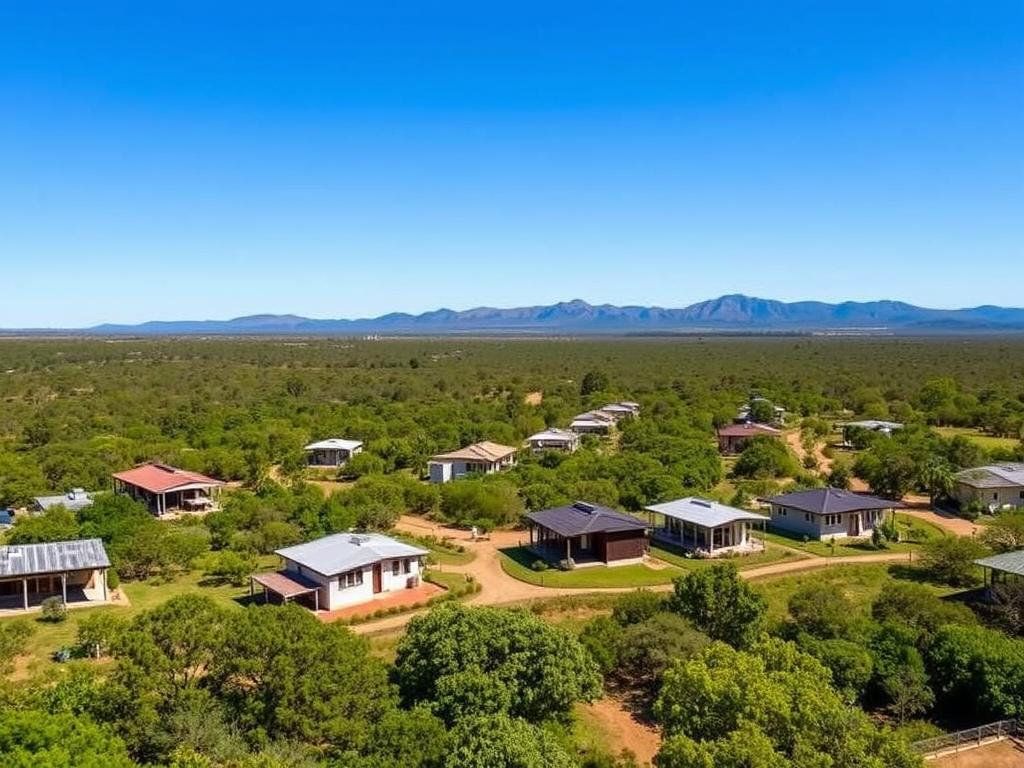
Assembly and Construction Process
Kit homes can be built in two ways: DIY assembly or with professional help. Your choice depends on the design’s complexity and your skills.
DIY Assembly vs. Professional Help
If you know carpentry and like DIY, building a kit home can save money and be fun. The kit has all the tools and materials you need. But, for complex designs or a stress-free build, Prebuilt can help with partner builders.
Timeline for Construction
Kit homes are built faster than traditional houses. The time it takes depends on the design’s size and detail. You can go from slab to lock-up in days or weeks, perfect for remote areas or tight deadlines.
Tools and Materials Needed
Prebuilt kit homes come with all the tools and materials needed. This includes everything from the start to the finish, making building easy and quick.
Whether you build it yourself or get help, kit homes are a quick and efficient choice for remote living in Queensland.
| Metric | Value |
|---|---|
| Average Time for DIY Assembly | 2-4 weeks |
| Average Time for Professional Construction | 1-2 weeks |
| Typical Tools Included in Kit | Hammers, power tools, fasteners, saws, and more |
| Estimated Cost Savings Compared to Traditional Construction | Up to 30% |
“Prefab construction can lead to significant time savings and cost efficiencies compared to traditional construction methods.”
–Sustainable Home Magazine
Environmental Considerations for Kit Homes
Kit homes are a great choice for building green and saving energy. They use sustainable materials and new energy-saving tech. This makes them perfect for those wanting to live off the grid.
Sustainable Materials
Kit homes use sustainable building materials like recycled steel and bamboo. These materials are good for the planet and last a long time. They also have special roofs to protect against the sun and bad weather.
Energy Efficiency Features
Kit homes are designed to save energy. They come with solar panels and wind turbines. This means they can make their own power and use less from the grid.
Off-Grid Living Opportunities
Kit homes are great for living off the grid. They can make their own power and handle their own water and waste. This makes living there more independent and green.
| Bushfire Attack Level (BAL) Classifications | Description |
|---|---|
| BAL low | Minimal risk of bushfire attack |
| BAL 12.5 | Possibility of ember attack |
| BAL 19 | Increased risk of ember attack and radiant heat |
| BAL 29 | Significant risk of ember attack and radiant heat |
| BAL 40 | Extreme risk of ember attack, radiant heat, and direct flame contact |
| BAL FZ | Flame zone, highest risk of bushfire attack |
The Queensland government supports green homes. Using kit homes is a smart choice for a sustainable future. It’s good for the planet and comfortable living.
Maintenance and Longevity of Kit Homes
Kit homes need regular care to last long. They are made to handle Queensland’s remote areas well. But, keeping them up is key to their lasting value.
Regular Maintenance Tips
- Check the home often for weather damage like cracks or peeling paint.
- Clean the outside and inside to stop damage from dirt and weather.
- Make sure there’s good airflow and temperature control.
- Fix problems quickly to avoid more damage and keep the home strong.
Common Issues and Solutions
Kit homes face challenges like weather damage. Using strong materials like steel frames helps a lot. Regular checks and quick fixes also help keep the home in good shape.
Durability of Materials
Kit homes are very durable. Steel frames, for example, stand up to cyclones and fires. They last a long time because of special treatments like galvanization.
“Regular maintenance and the use of high-quality, durable materials are essential for ensuring the longevity of kit homes in Queensland’s remote areas. With the right care and attention, these cost-effective housing solutions can provide decades of comfortable, resilient living.”
By taking good care of kit homes and using strong materials, they can last a long time. This makes them a great choice for homes in Queensland’s remote areas.
Testimonials: Real-Life Experiences with Kit Homes
Exploring kit homes in remote Queensland areas is exciting. Sustainable Home Magazine shares real stories from kit homeowners. They talk about their successes and challenges.
Success Stories from Homeowners
Many kit homeowners in remote Queensland love their off-grid life. Riverbuilt’s kit homes let them build their dream homes for under $253,000. This saves money, allowing them to live sustainably and self-sufficiently.
Challenges Faced
Kit homes have many benefits, but the journey isn’t always easy. Some face trouble getting traditional financing. Lenders might not want to finance kit homes because of the upfront cost.
The cost of building a kit home can also vary. It depends on your skills, the availability of trades, and how much finishing work you need.
Lessons Learned
Kit homeowners in remote Queensland share important lessons. They say planning well and choosing the right supplier are key. They also talk about the need for long-term sustainability.
Managing trades and budgeting correctly are crucial. They warn about the impact on daily life and work. They mention the extra costs for mistakes and accidents.


